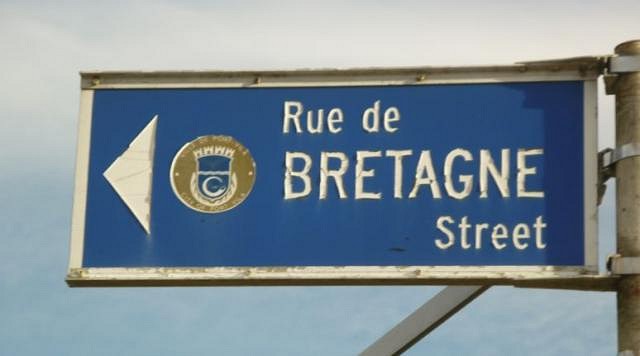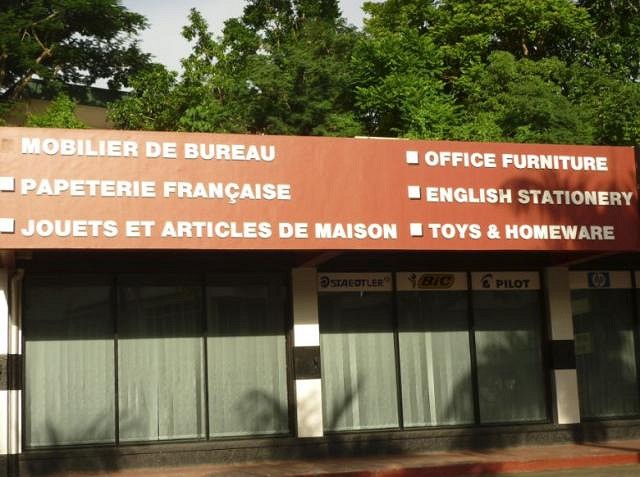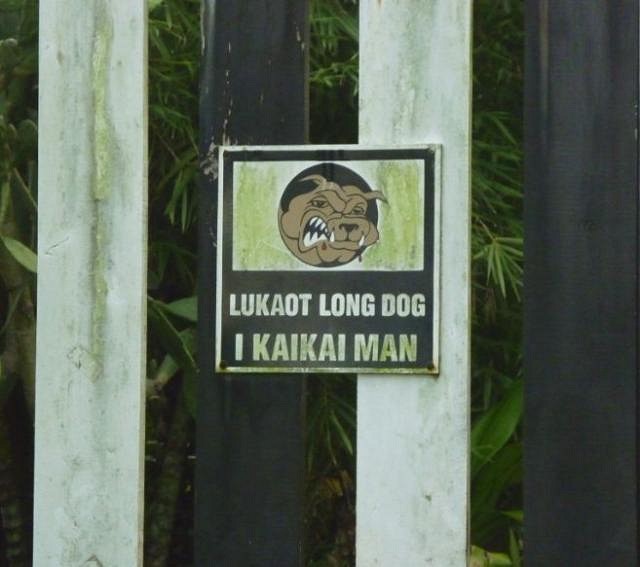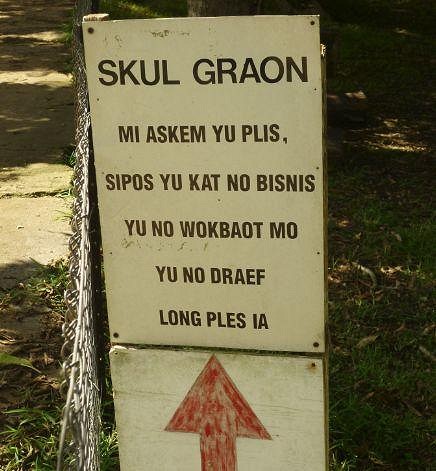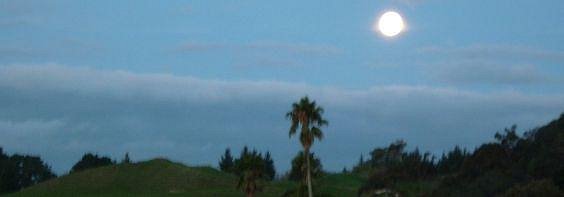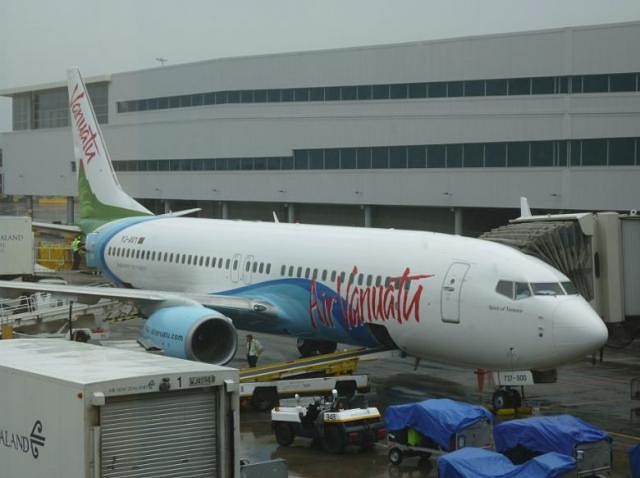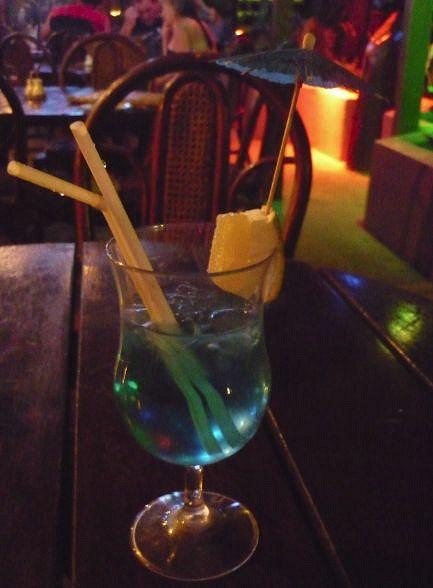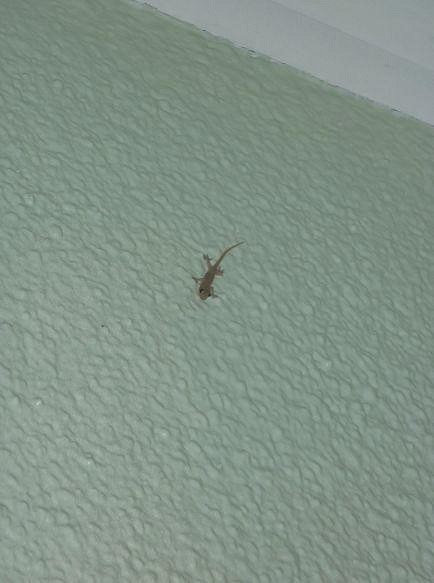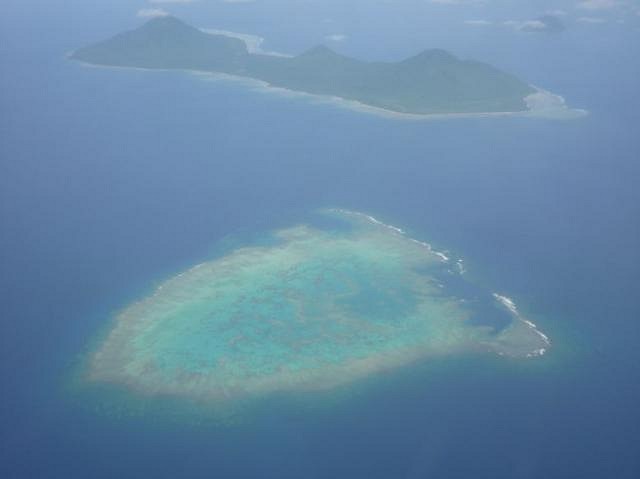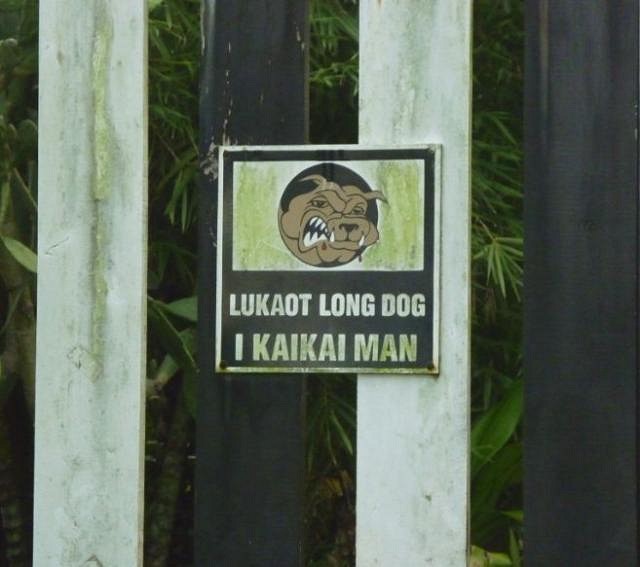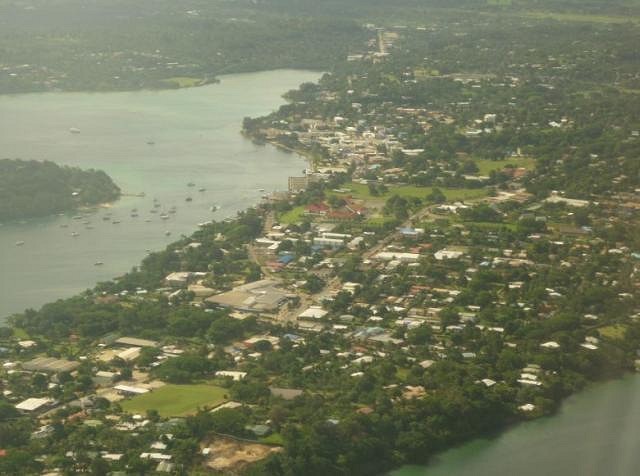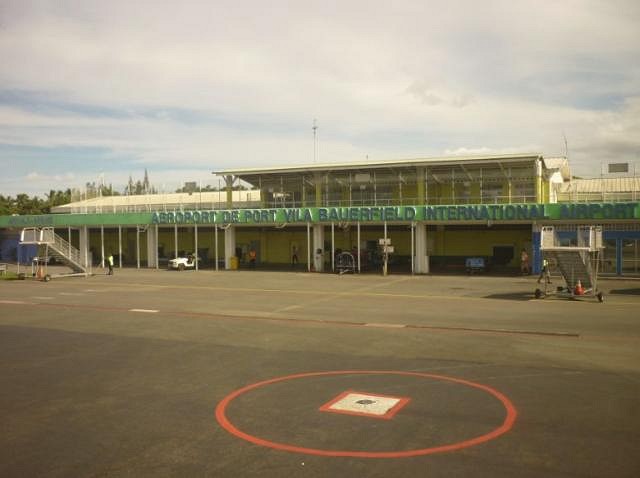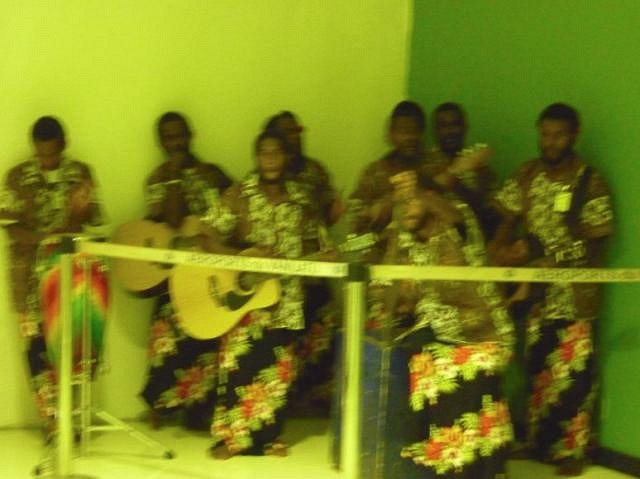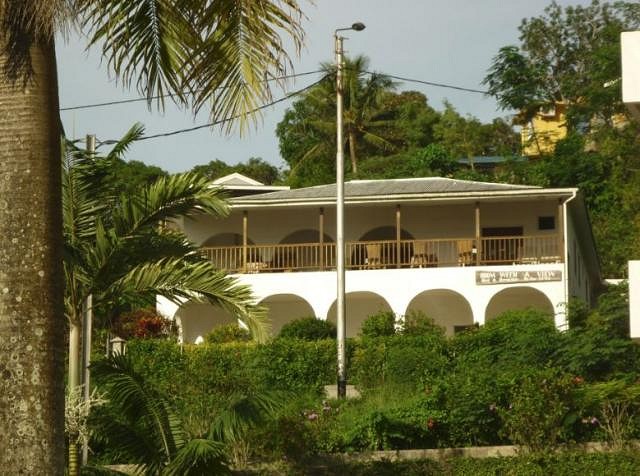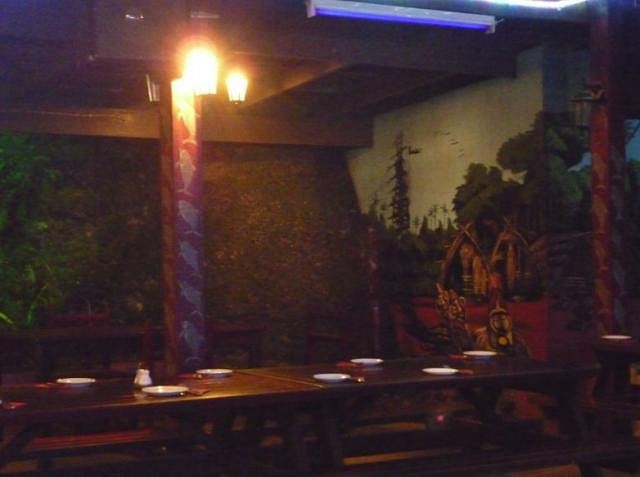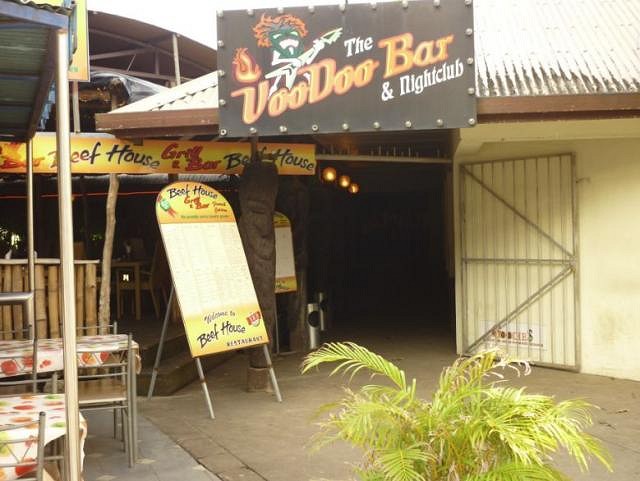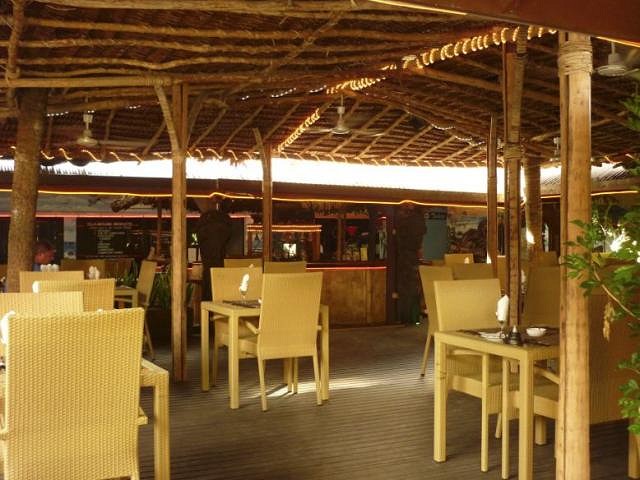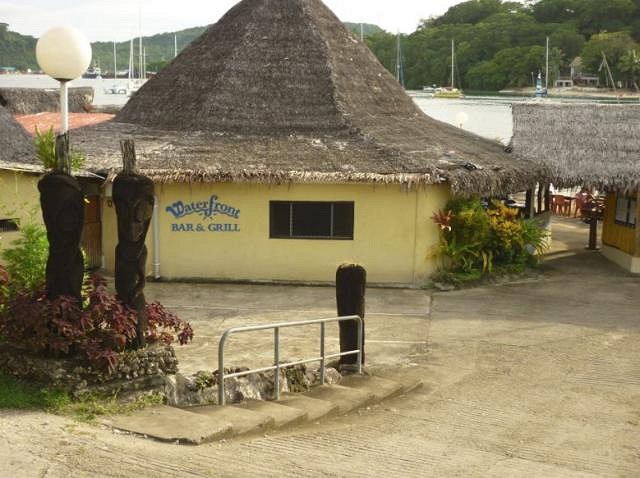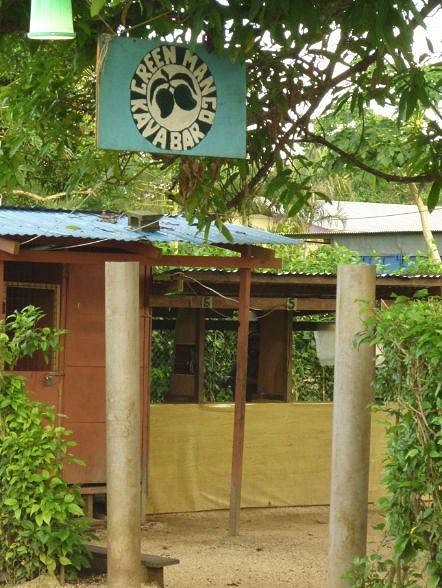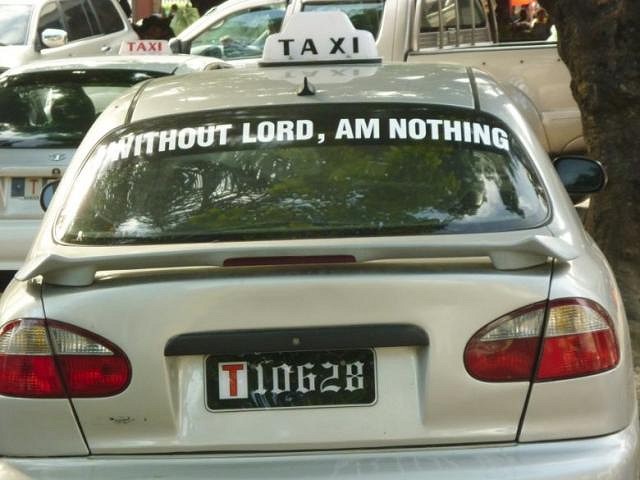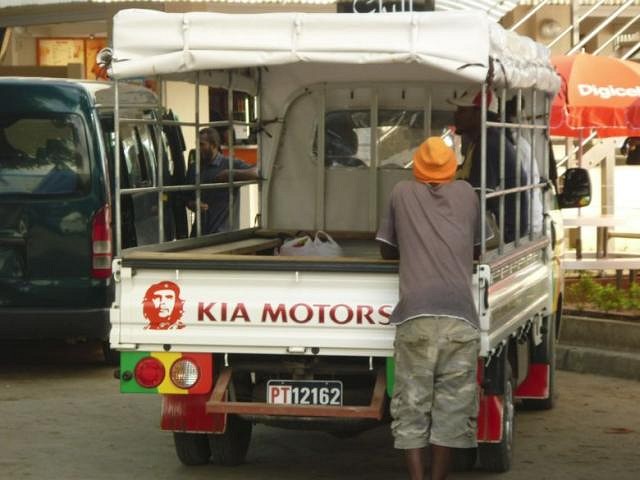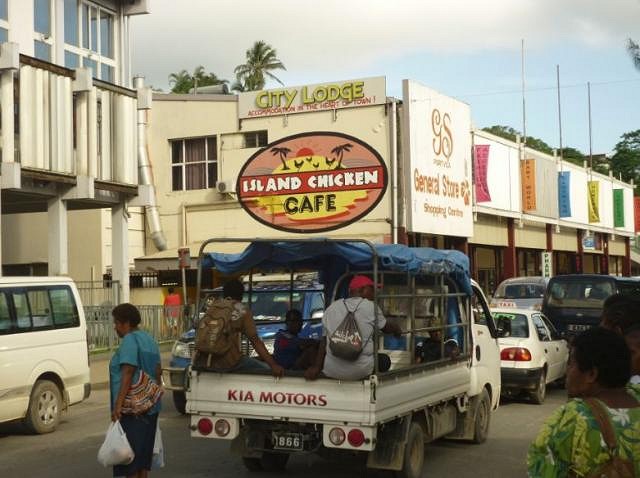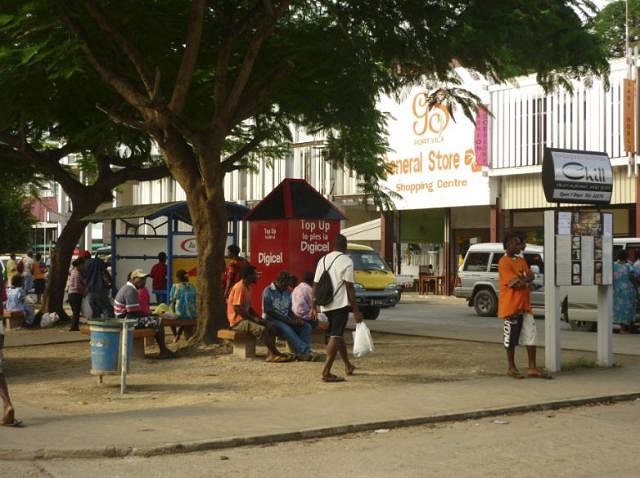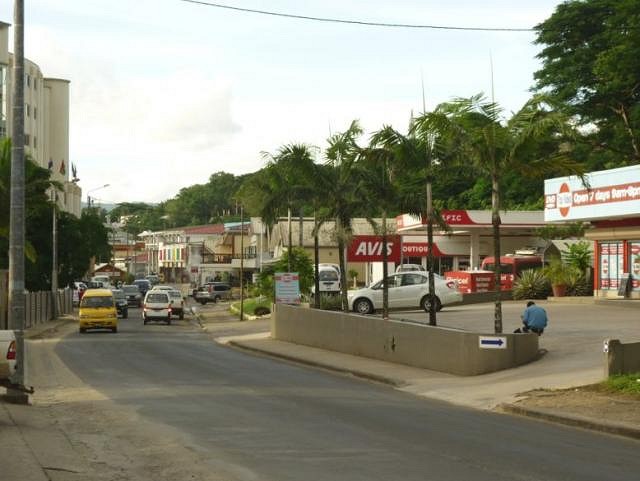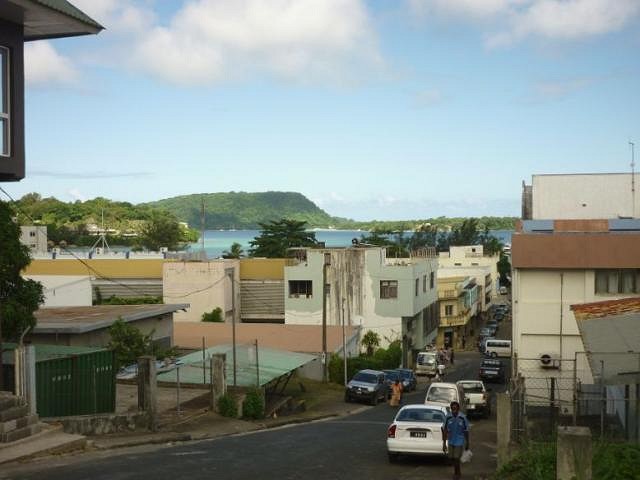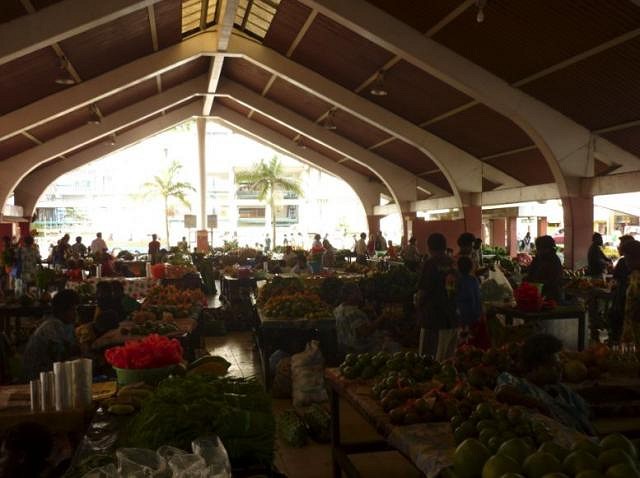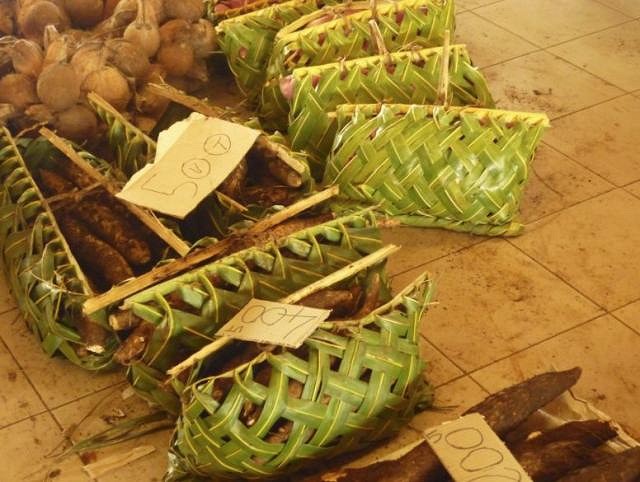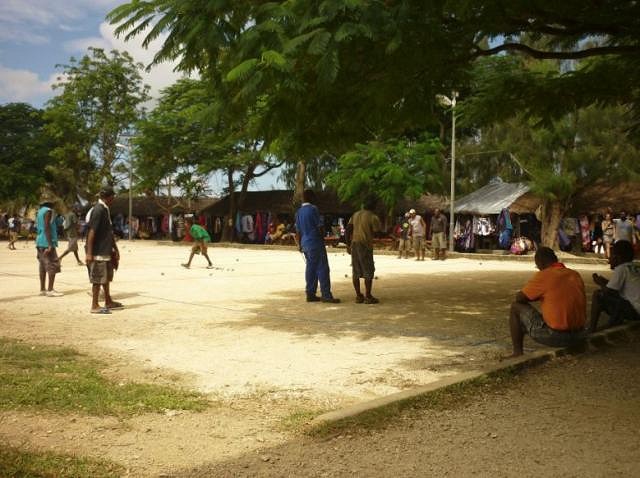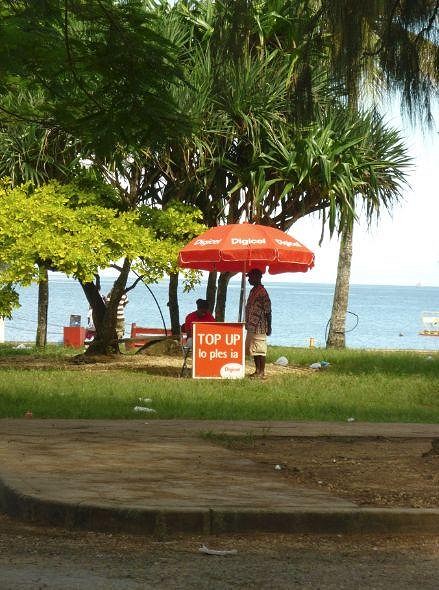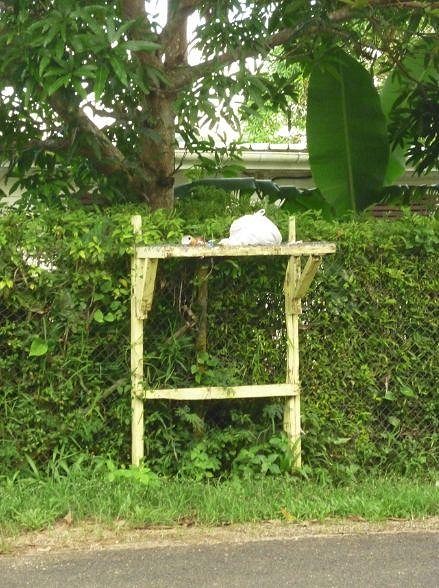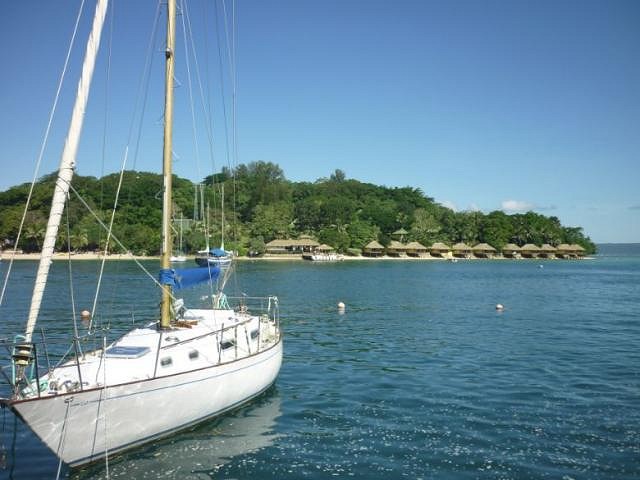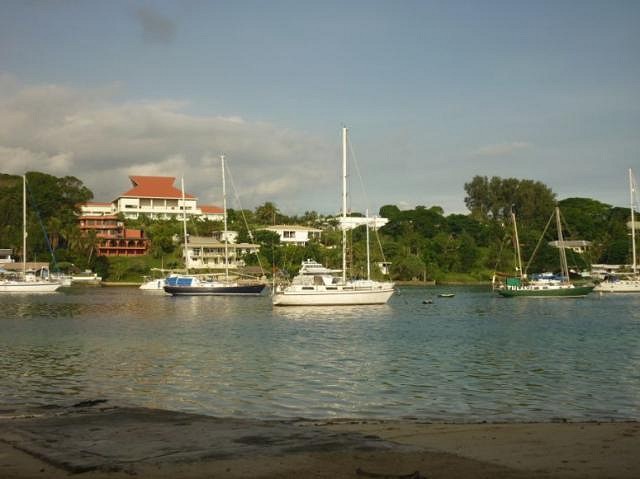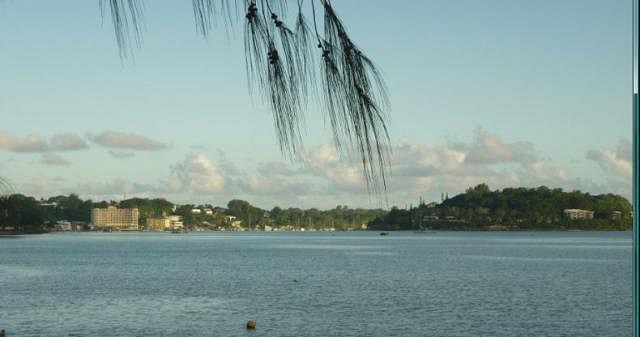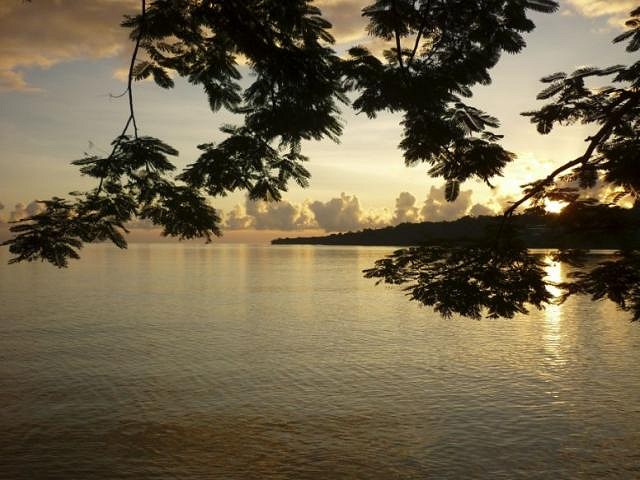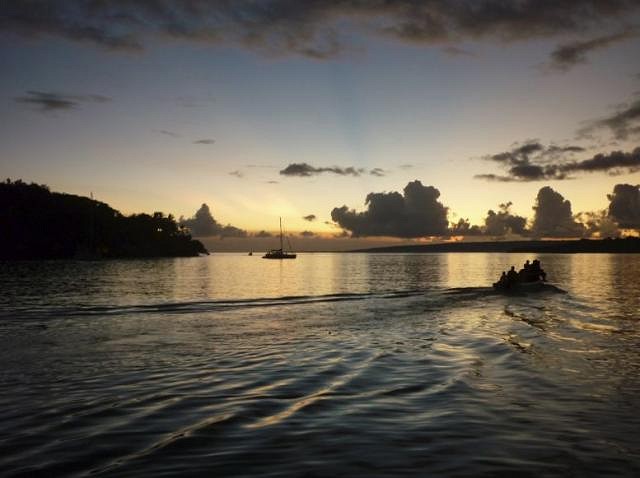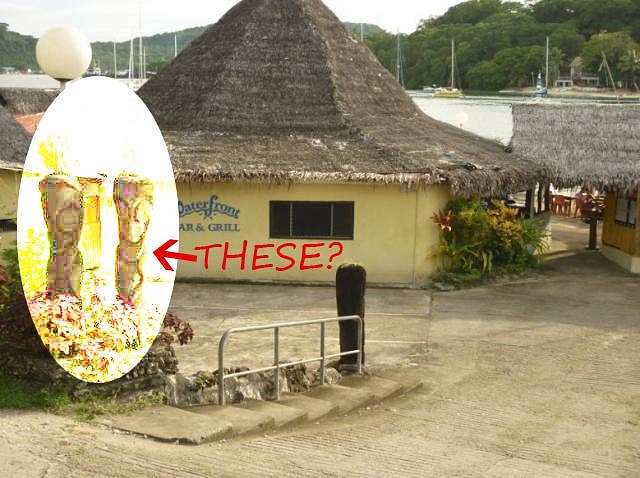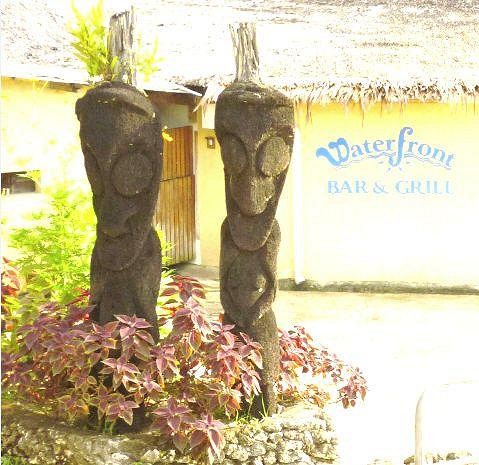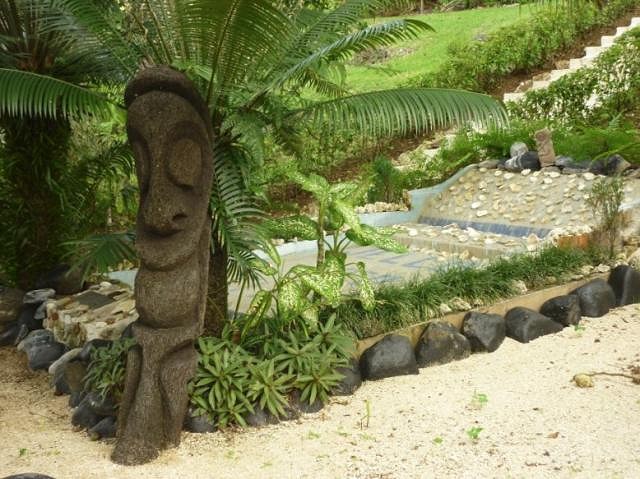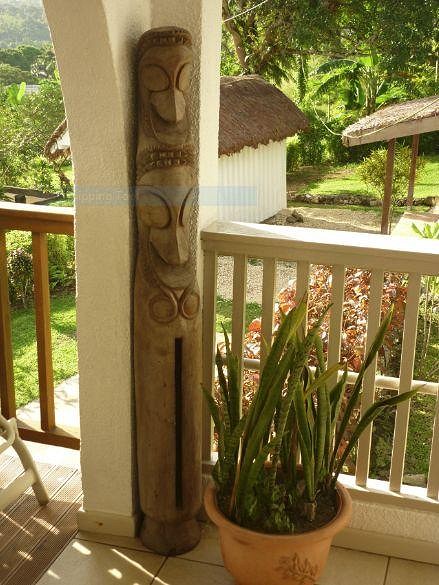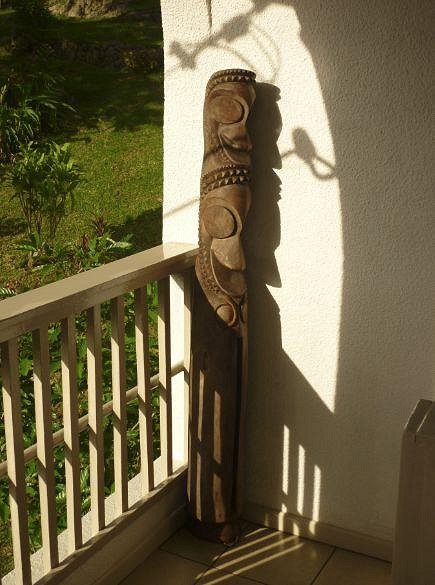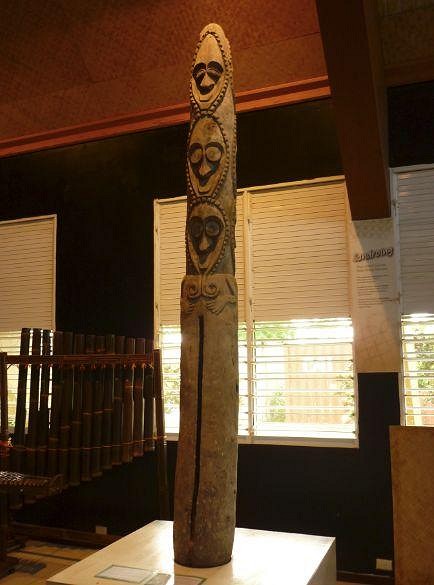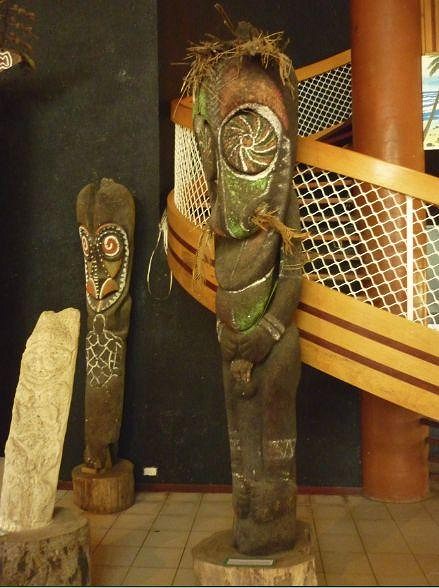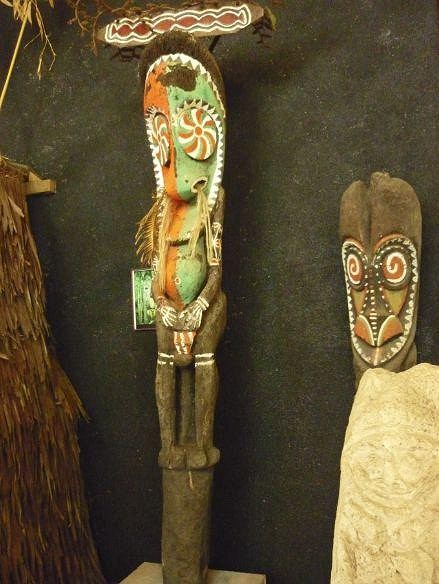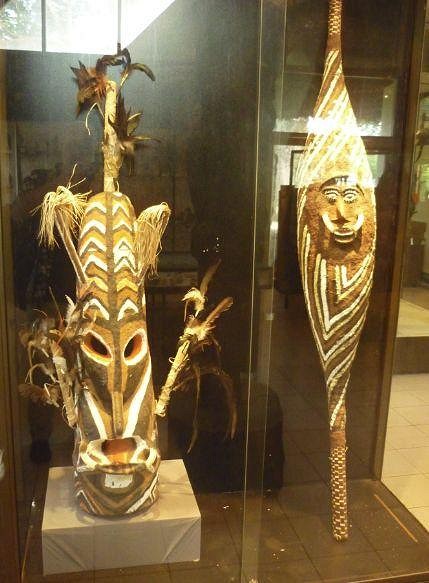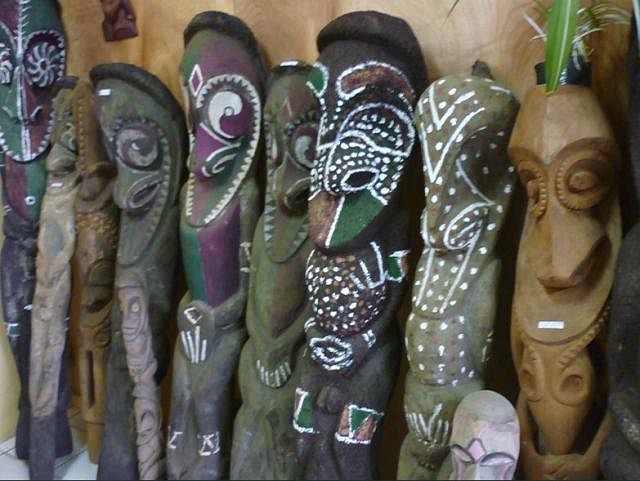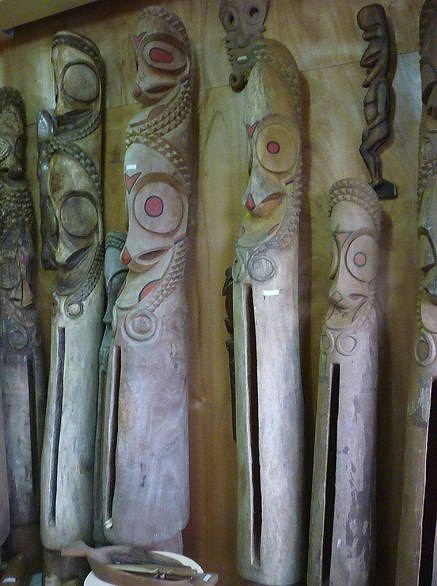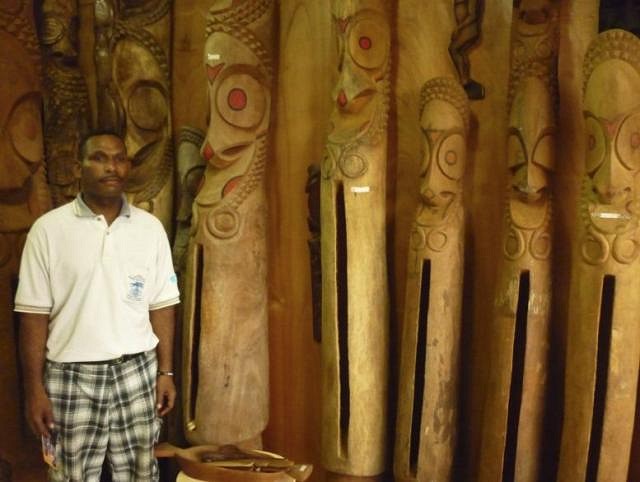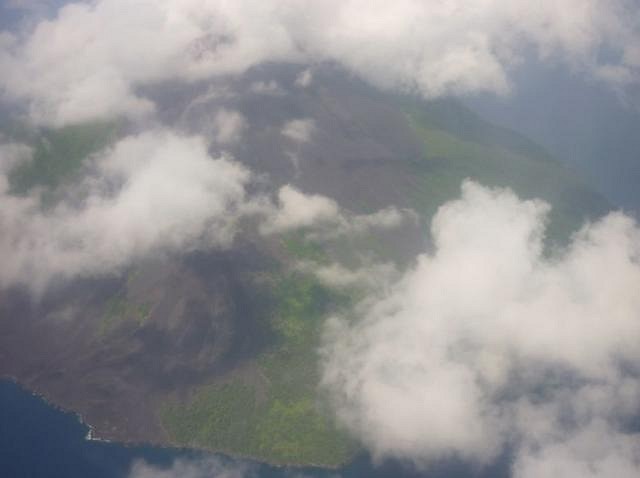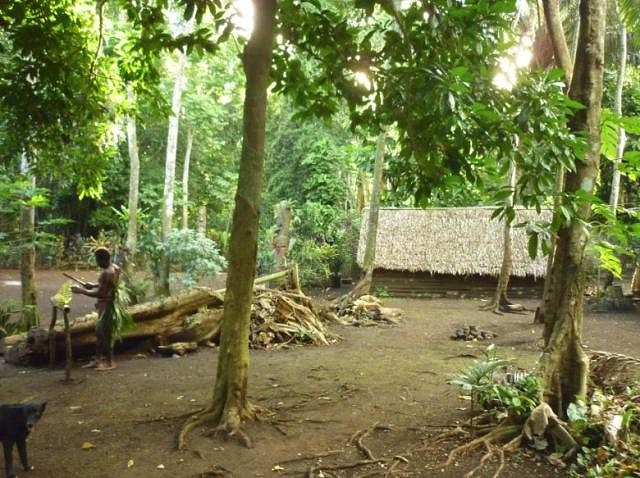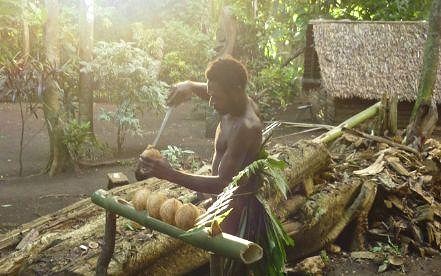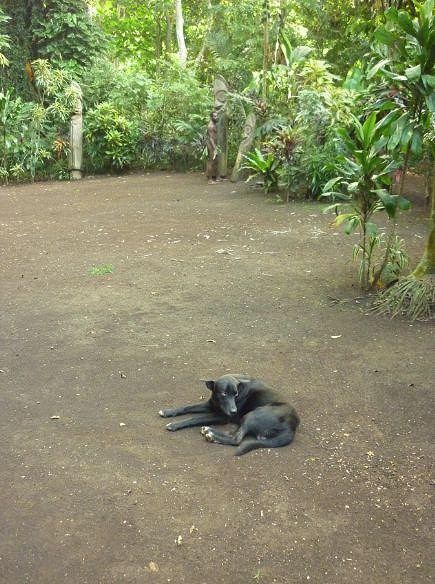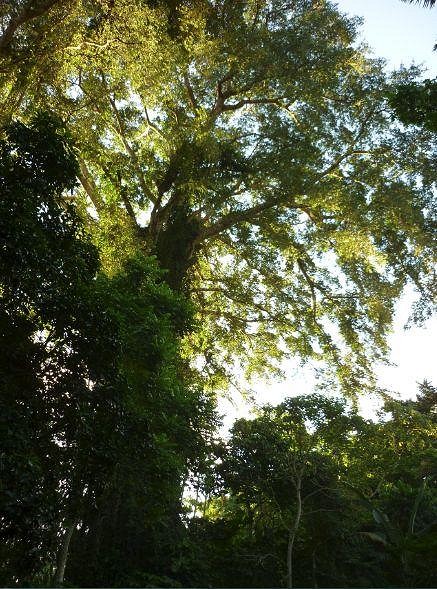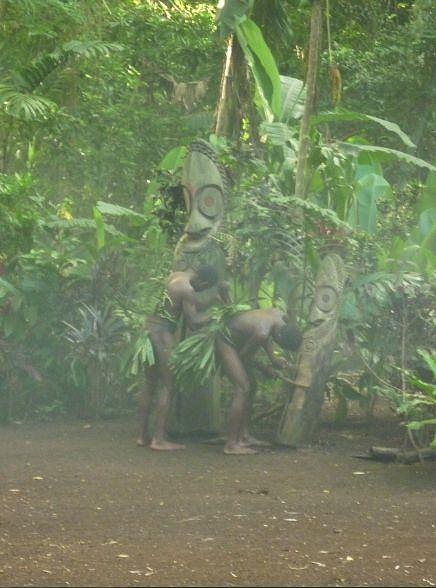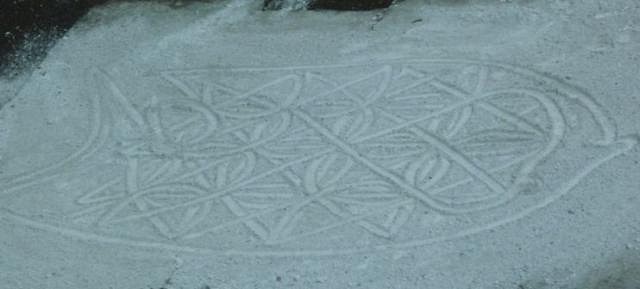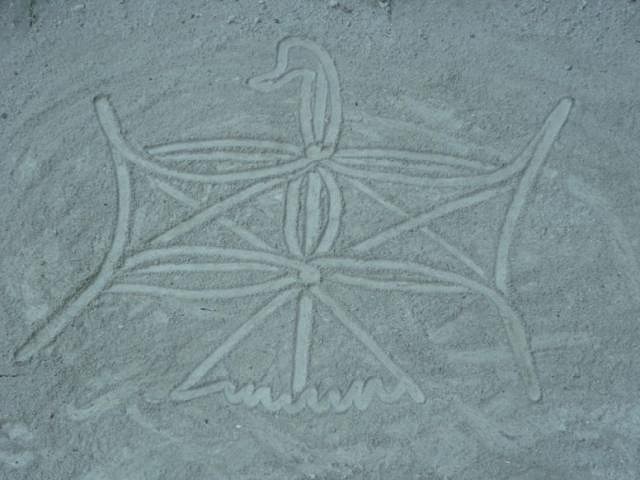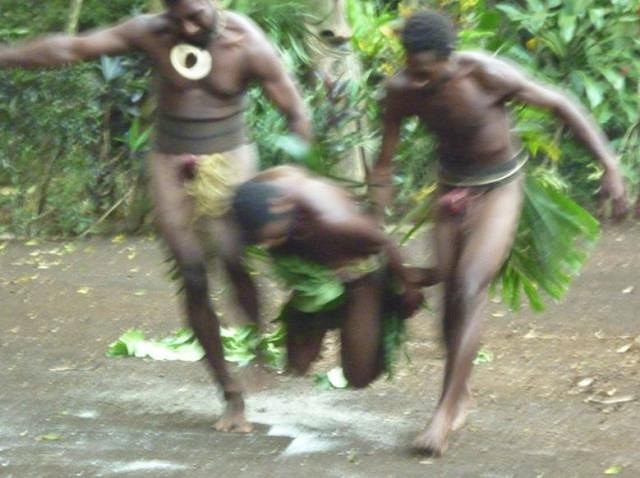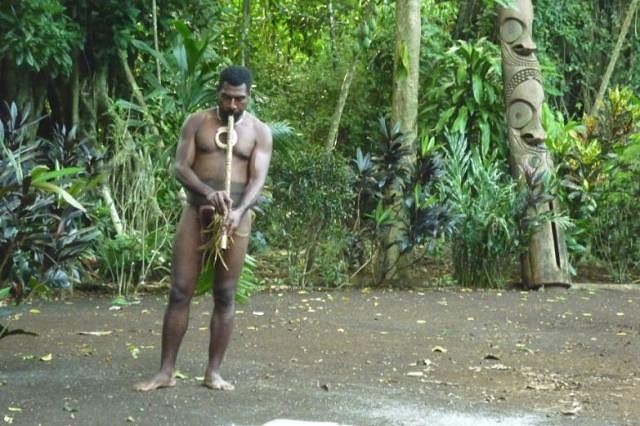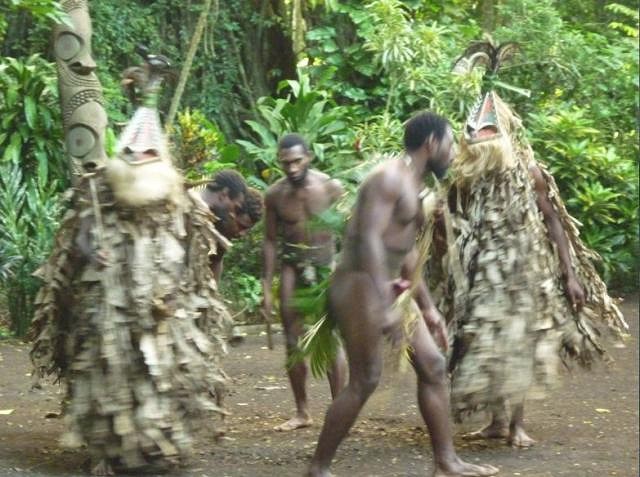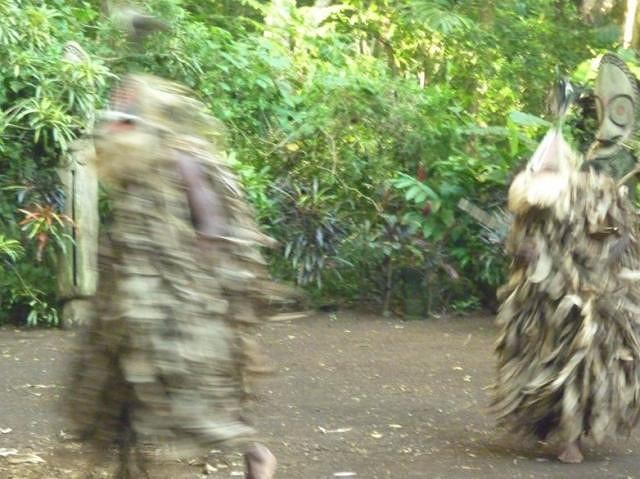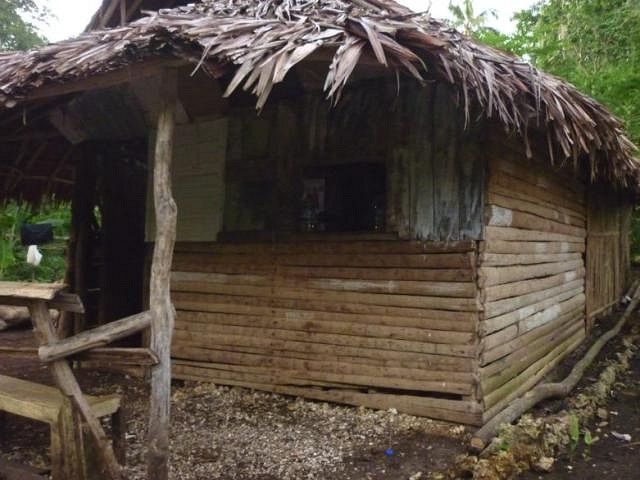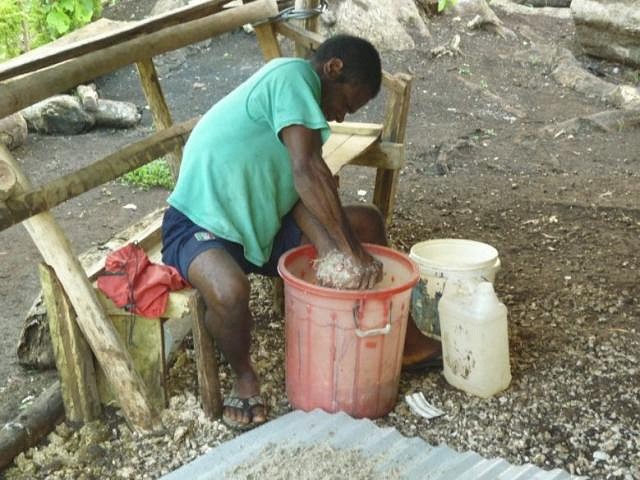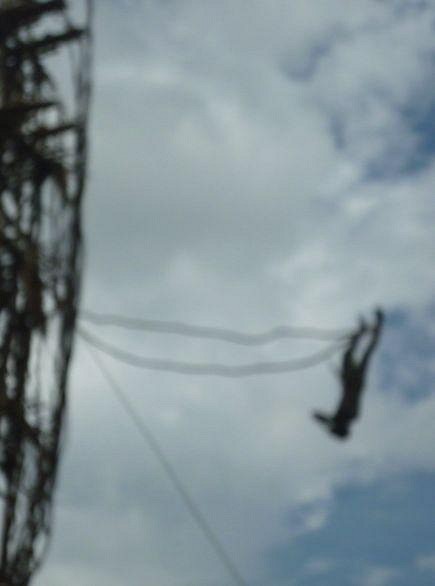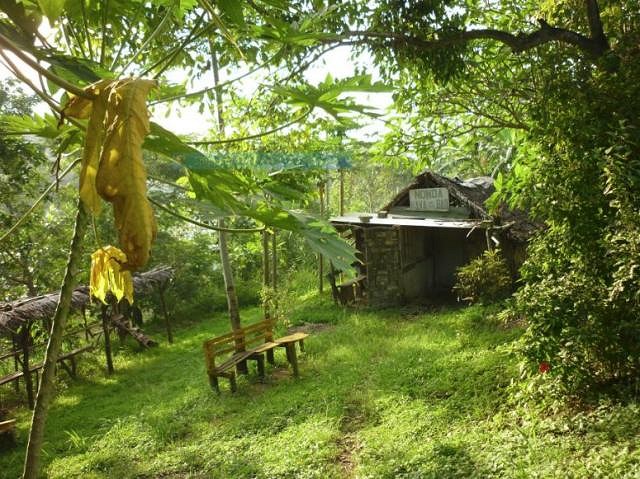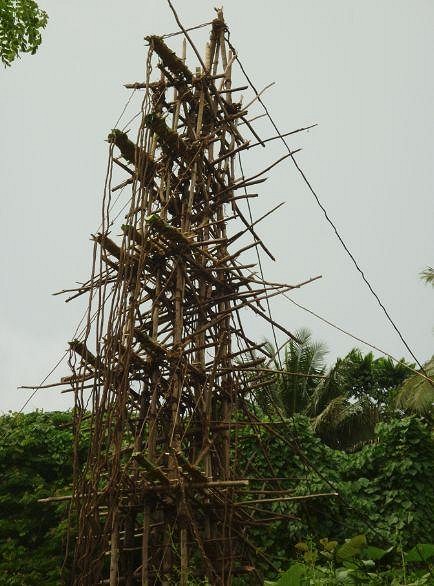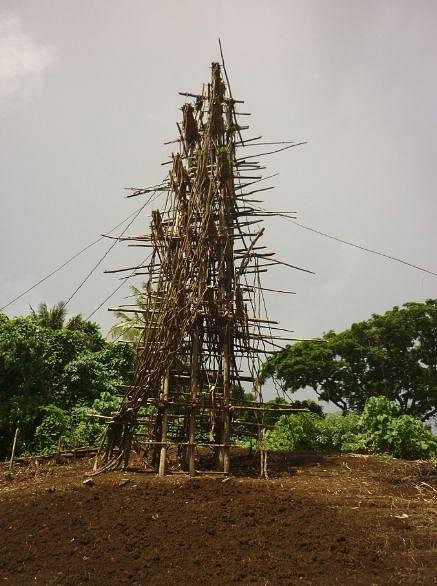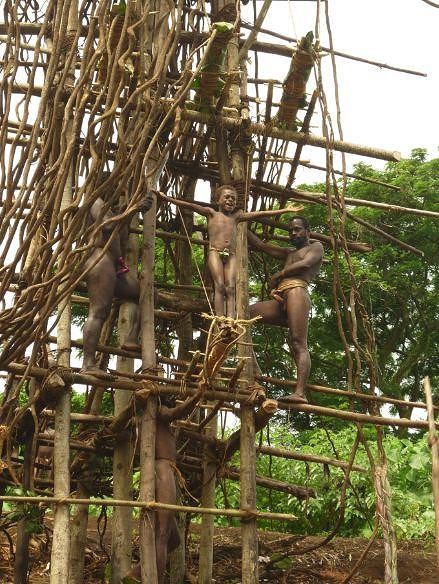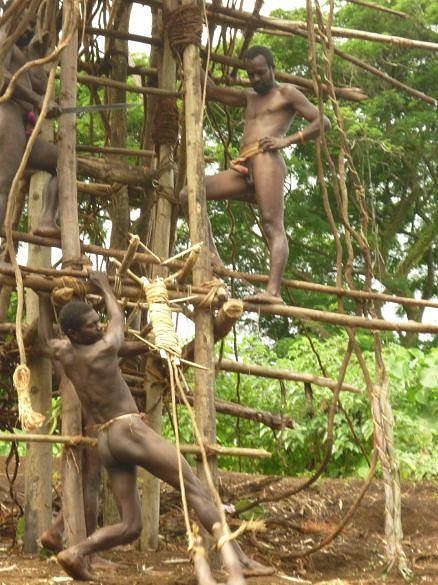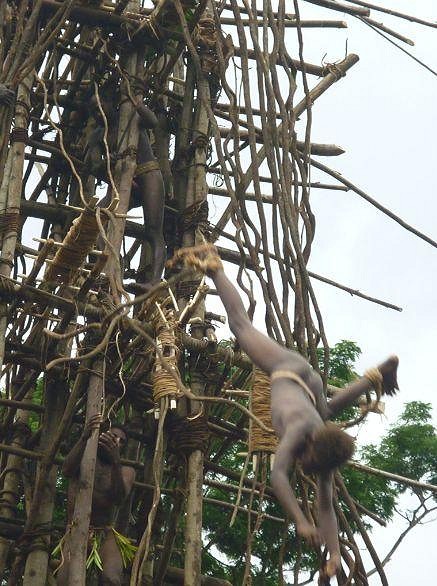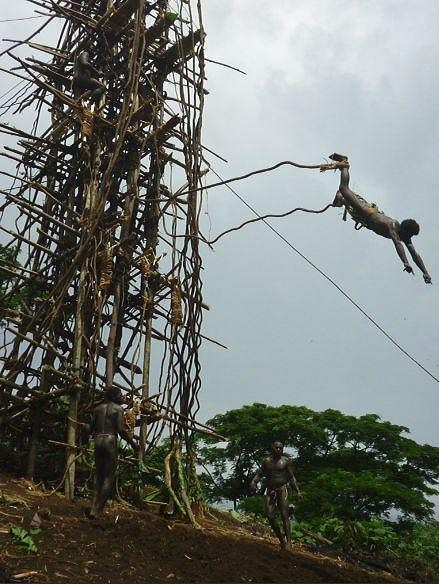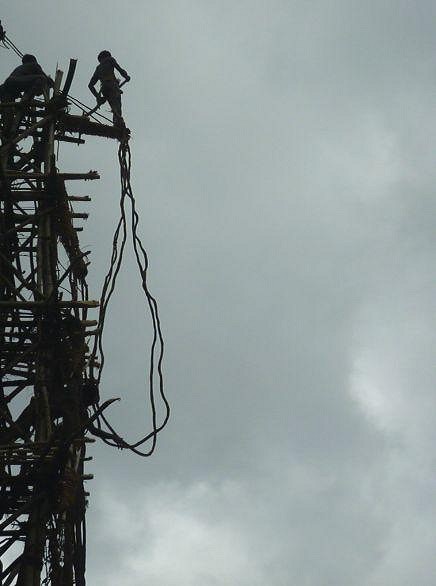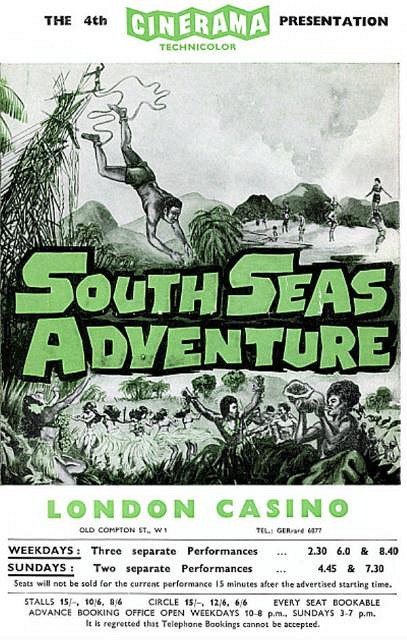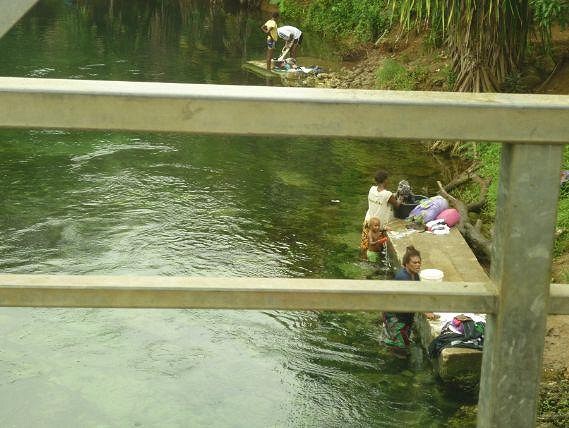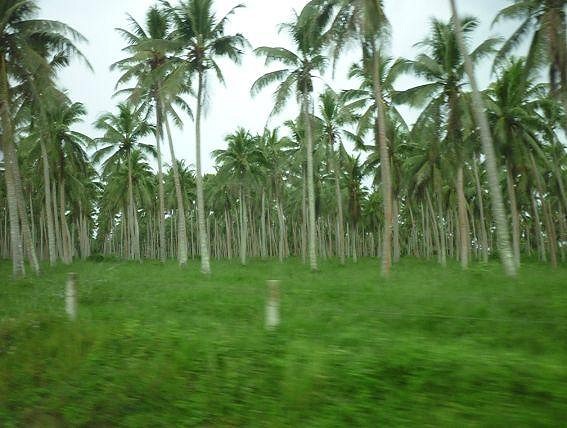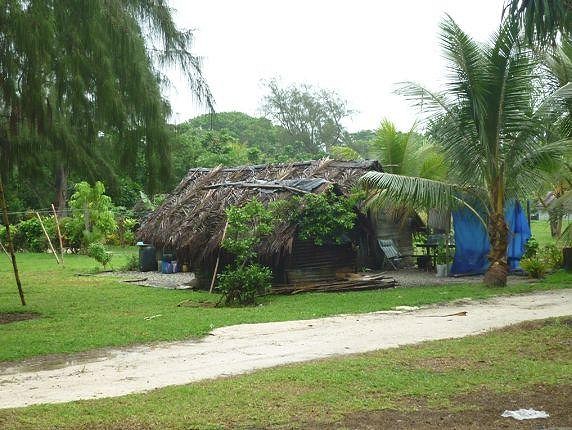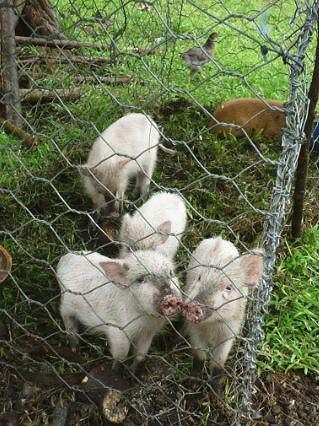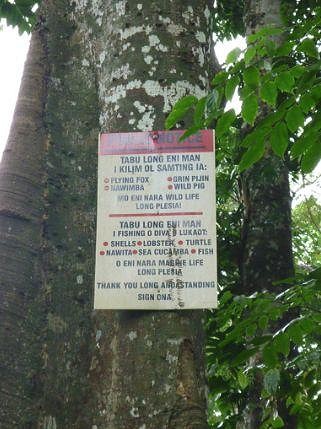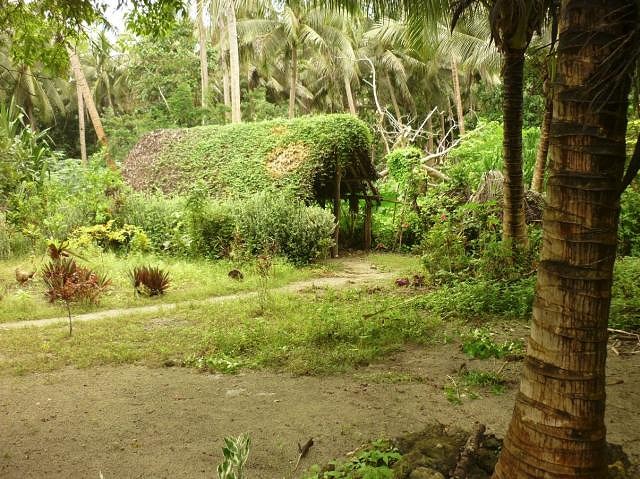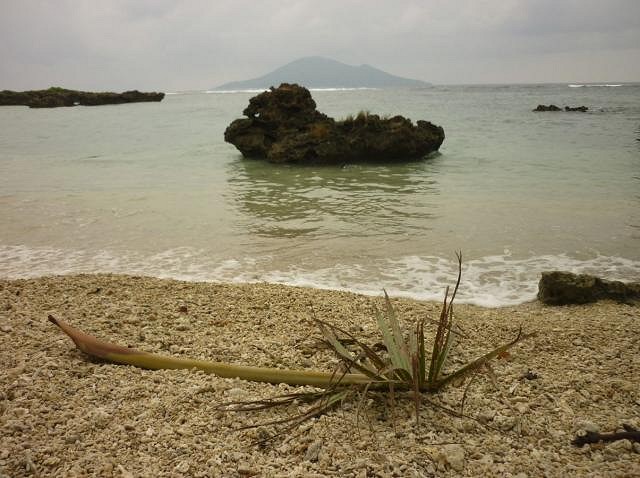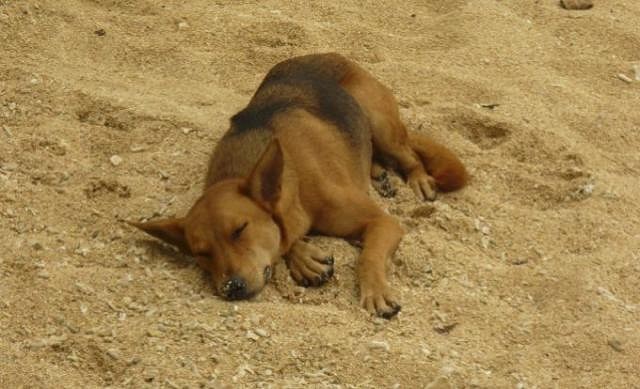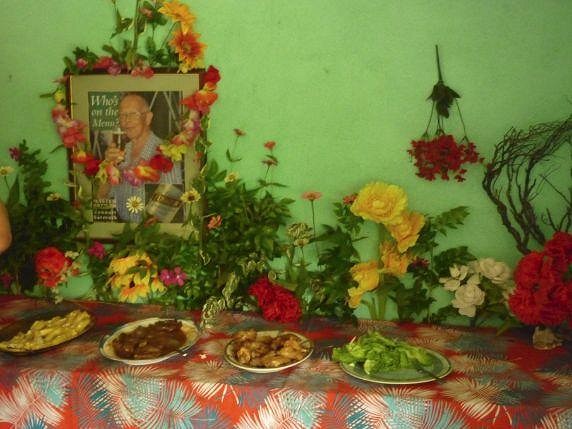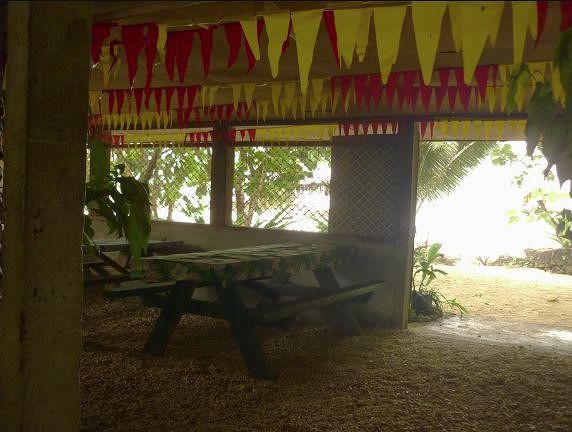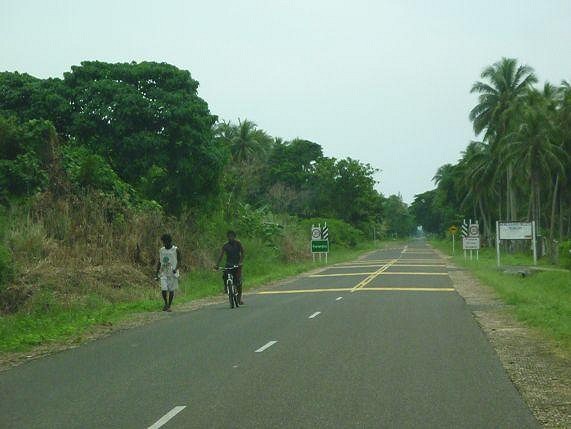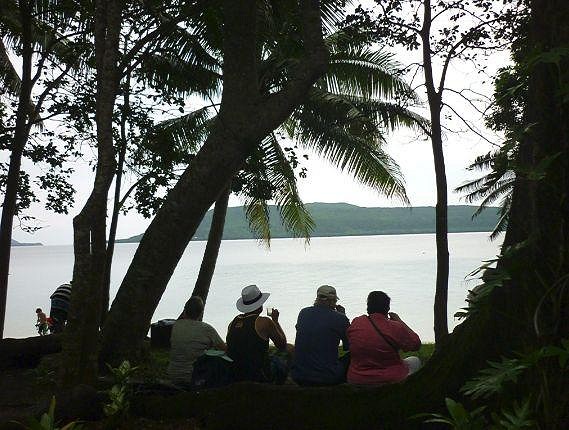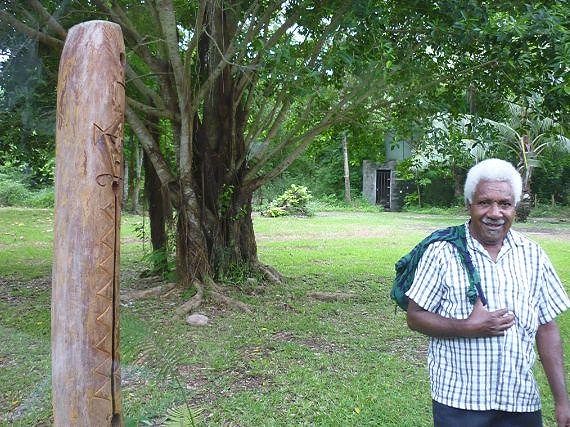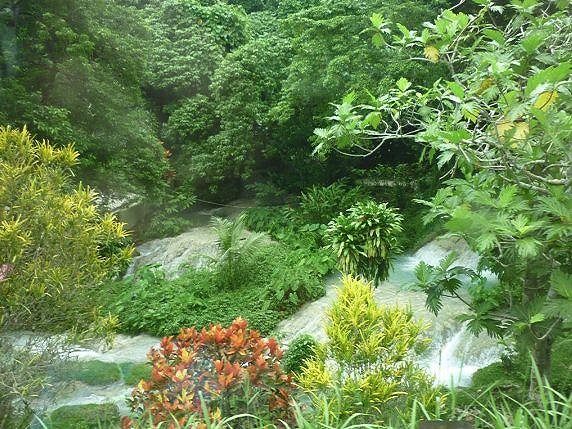Tiki Central / Tiki Travel
Club Nouméa's Tiki Tour of Vanuatu
Pages: 1 31 replies
|
CN
Club Nouméa
Posted
posted
on
Fri, Jun 3, 2011 6:18 AM
Part 1: History and Language
By the first few years of the 20th century, in the days when the European powers' colonial carve-up of the world was almost completed, there remained the issue of what to do about a strange archipelago east of Papua New Guinea and north of New Caledonia, called the New Hebrides. A land of cannibals, castaways, runaways and traders in the 19th century, by the early twentieth century the New Hebrides had coalesced into a loose entity that might start being considered a viable administrative concept if only France and Great Britain could figure out what to do about it. The Europeans who lived there were a motley bunch of French citizens predominantly from France, New Caledonia and Indochina, and British subjects predominantly from the UK, Australia and New Zealand. Neither the expatriate French nor English speakers were there in sufficient numbers to outweigh their rival community, and the islands were not of sufficient economic importance for either France or Britain to contemplate annexing or even partitioning the archipelago. So in 1906 the two empires arrived at a most peculiar compromise: the Franco-British Condominium of the New Hebrides. Neither power would govern the islands - both would. The result was two of everything: a government consisting of two Resident governors with two rival colonial administrations, two justice systems (not forgetting the Native Court system, whose presiding judge was appointed by the King of Spain), two police forces, two prison systems, two currencies, two official European languages, two school systems, and two rival brands of Christianity (Catholicism for the French speakers and various brands of Protestantism for the English speakers). There were even two sets of road rules: on those islands administered by the British, they drove on the left side of the road, and on those islands administered by the French, they drove on the right. This enabled some strange situations to arise. If you were a foreign immigrant to the New Hebrides, you could decide whether you wanted to settle there under French or British law, and whether you wanted to set up your business there under French or British companies law. If you were arrested for some misdemeanour, you could decide whether you wanted to be tried in a French or British court, or whether you wanted to do your jail time in a French or a British jail (the British jail in Port Vila was tidier and better organised, while the French jail had the best food...). Little wonder then that the ethnically and linguistically varied Melanesians who found themselves ruled over by this strange colonial aberration and who came to be educated in Western ways, ended up referring to it caustically not as "the Condominium", but as "Pandemonium". Independence came in 1980, after a minor contretemps instigated by French settlers and their indigenous sympathisers that came to be known as the "Coconut War" ( http://en.wikipedia.org/wiki/Coconut_War ), resulting in the departure of many French settlers in the early 1980s. The new nation, led by the English-speaking Vanua'aku Pati, made a name for itself in the 1980s as a vigorous critic of France's South Pacific policies, but use of the French language survived, and it is still one of the archipelago's two official European languages, alongside English:
The third official language is a variety of pidgin English that is called "Bichelamar" by French-speakers, and "Bislama" by everyone else. It originally started out in colonial times as a basic lingua franca used by European traders and natives for doing business, and it has since become a national language used for all sorts of things:
Many tourists imagine that speaking Bislama only involves talking baby talk or speaking English for dummies, and come up with phrases like "mi eatem coconut", imagining that they are speaking correctly, when the correct way of saying "I am eating a coconut" is "mi kakae coconus". Similarly, "thank you very much" is actually "tangyu tu mas", and when greeting someone in the street you do not say "good evening", but rather "gud naet". Bislama, although it looks comical to English speakers, is a proper language with its own pronunciation, spelling, syntax and grammar:
Some of this sign is a no brainer if you speak English, but you are not going to be able to decipher all of it unless you know that "sapos" actually means "should" or "if", and that "Pikinini blong yu" actually means "your child". Other things only really make sense if you read them out aloud:
And even linguists who have done a bit of study before arriving can get thrown. At my hotel one morning I was asked: "Yu wanem poelem mo fraenem eh?" To which I replied: "Mi no harem save!" (I don't understand!) I asked the staff member to repeat the sentence a couple of times before I finally got it, but it took a knowledge of 3 languages to crack what she was asking. What really threw me was "eh" which I realised meant "eggs", following which things fell into place: "poêle" is a pot or pan in French, which I took to mean scrambled, "mo" is a Polynesian word meaning "and/or", and "fraenem" means "fried". An assortment of useful expressions in Bislama: Mi go long bush - I am answering the call of nature Mi no go long bush - I am constipated Mi sit sit wara - I have diarrhea No gud man dog! - Bad dog! (useful for dealing with the many strays roaming around) or No gud woman dog! - Bad dog (bitch)! Hemia wan big pig! - That's a big pig! (pigs are a status symbol in Vanuatu's tribal societies - this is the equivalent of admiring a man's car in the US) Hemia wan bigfala pig! - Man, that's a REALLY big pig! (this needs to be spoken in an appropriate tone of wonderment) And if you want to start a conversation with a ni-Van (as the locals call themselves), you do not talk about weather, but rather about family ties and tribal origins: Yu kat waef? Yu kat sista mo brata? Yu kam wea? - Are you married? Do you have a sister or brother? Where are you from? Such questions are not at all nosy, and provide a nice lead-in to a long and friendly chat ... CN
[ Edited by: Club Nouméa 2011-06-03 06:20 ] [ Edited by: Hakalugi - Typo fixed per request. - 2012-01-21 21:19 ] |
|
G
GROG
Posted
posted
on
Fri, Jun 3, 2011 10:28 AM
Liking this thread so far. |
|
TB
Trad'r Bill
Posted
posted
on
Fri, Jun 3, 2011 2:50 PM
Very interesting examples of the Vanuatu pidgin English - thanks. |
|
CN
Club Nouméa
Posted
posted
on
Sun, Jun 12, 2011 2:17 AM
Part 2: Practicalities
Even if you are staying largely in an urban setting whilst in Vanuatu, you do need to take along a few special items, apart from the obvious things like a sun hat, sunscreen and sunglasses. When in the South Pacific islands, I find it handy to take along 2 or 3 plastic kitchen containers with a hermetic seal. Whether you are going for a picnic, or just want to keep snack food in your hotel room, ants and cockroaches are a constant problem, so an airtight barrier between them and your cookies, potato chips, or whatever is the only solution. Likewise, when disposing of food waste in your hotel room, a supply of plastic bags is essential: put your apple core or whatever in the bag, tie a knot in the top, and then chuck it in the bin. The last thing you want is food waste lying around your room: next thing you know there will be a horde of ants or roaches all over everything. Even if you are only wandering around Port Vila or Luganville, a plastic drink bottle is essential. Keep sipping it whether or not you think you are thirsty, as you tend to sweat a lot due to the local humidity, and dehydration can really wipe you out in Vanuatu's climate. Water is fine, but I like to take along a supply of powdered fruit drink sachets (orange, mango, lemonade etc.) and mix them up in a dilute solution in water. (Some people also like to add a little salt.) Drinking full strength soda, soft drinks or fruit juice in that climate doesn't really quench your thirst; you just end up wanting more sugar. And take it easy when you are walking around - you can't rush about like you would when out walking in a temperate climate. There's a reason why the locals walk slow... You might also want to adopt the local practice of getting up at the crack of dawn, getting most of your stuff done by 11am, and then taking it easy in a bar or cafe for 3 or 4 hours until the worst of the day's heat is over. Or even for the rest of the day...
The characteristic odour of Vanuatu is rotting humus mixed with sweat. Everyone sweats profusely. Extra strength deodorant is recommended, or failing that, make sure you use a really fragrant shower gel. The humidity in Port Vila while I was there in April was 80% to 100% every day. It wasn't that hot - mid to high 20's (degrees Centigrade), but the sticky, clammy air was exhausting. After just 15 to 20 minutes' walking, you will begin feeling the sweat accumulating on your clothes. Bring lots of spare underwear - you will need it. Speaking of clothes - I took along the usual tee-shirts to wear, but by far the most comfortable item is the venerable Hawaiian shirt (the thinner the better), or indeed any other type of shirt. Tee-shirts just tend to stick to you in that humidity, and leave you feeling sweaty and clammy. When booking your hotel or other accommodation, ask if the room has mosquito screens on the windows, and whether it is air conditioned, or at least has a ceiling fan. If you can't handle heat, then by all means go for aircon and stay somewhere else. If there are no screens, take along a mosquito net, and a hook to fasten it from, and learn how to rig it up before you go. In Port Vila, malaria is not really a problem these days, but out in the islands, it is still a risk. And don't forget to take a roll of toilet paper with you if you are staying out in the bush - the locals just use leaves, but you won't necessarily know which ones to use.
Vanuatu is pretty safe when it comes to wildlife. As my guide John said to me: "Vanuatu - friendly spiders, friendly snakes, friendly crocodiles and friendly people!" There are no land creatures you need to worry about - the snakes and spiders are non-poisonous (no matter how big and ugly they are) and even the crocodiles (only found on some outer islands) tend not to eat people because of the abundant marine life that enables them to stay fat and contented. In the sea however, it is a different story - ask locals before swimming at secluded empty beaches (shark risk), and watch what you're stepping on underwater. Now, having completed the public service announcement, in the next instalment, we have the travel photos....
CN |
|
V

virani
Posted
posted
on
Sun, Jun 12, 2011 5:39 AM
very interesting. Please, more ! |
|
B
bigbrotiki
Posted
posted
on
Sun, Jun 12, 2011 11:46 PM
Indeed! Thank you. I love this sign:
I have always been fascinated by the various forms of Pidgin in the Pacific, here is one post regarding PNG language: http://www.tikicentral.com/viewtopic.php?topic=35520&forum=1&vpost=512866 ...and one regarding Hawaiian slang (which I realize are two different things): http://www.tikicentral.com/viewtopic.php?topic=35052&forum=1&vpost=501795 |
|
V

virani
Posted
posted
on
Mon, Jun 13, 2011 2:18 AM
It's funny, because "Kaikai" means also "Eat" or "food" in Marquesian (but not in Tahitian, they don't have the "K"). Is there a relation ? |
|
P
pablus
Posted
posted
on
Mon, Jun 13, 2011 7:59 AM
Great thread. I love the photos and the descriptions. |
|
CN
Club Nouméa
Posted
posted
on
Wed, Jun 15, 2011 1:41 AM
Thanks for all the positive feedback folks - I will be posting more stuff soon. Yes, Virani, there is definitely a Polynesian connection with the verb "to eat". There are a few Polynesian words in Bislama, although I don't know whether it is because the first European explorers and traders introduced these words, or whether it is because of the Futuna Islanders who settled on the island of West Futuna in Vanuatu several hundred years ago, or possibly these words were introduced by the Polynesian migrant workers imported by European settlers in the 19th century to work on their plantations and farms. CN |
|
CN
Club Nouméa
Posted
posted
on
Tue, Jun 21, 2011 7:51 AM
Part 3: A Stroll Around Port Vila
First a general aerial shot to get you oriented: The straight road you can see at the top centre is the Walter Lini Highway (named after Vanuatu's first Prime Minister, who was the leader of the Vanua'aku Pati), which is the main road from the airport. The expanse of water to the left is Vila Bay, with Iririki Island on the left edge of the photo. The expanse of water in the right bottom hand corner is Erakor Lagoon. The large building complex with the red roofs in the centre of the photo is the Parliament, and above it, on the other side of the fields, is the downtown area.
Bauerfield International Airport is one of Vanuatu's two international airports (the other one is at Luganville, on the island of Espiritu Santo). It is named after Lieutenant Commander Harry F. Bauer, a US Navy officer who died in the Guadalcanal campaign in 1942 ( http://en.wikipedia.org/wiki/Harry_F._Bauer ).
The slightly blurry string band at the airport that greeted my flight from Auckland.
The view from the balcony of my hotel (Room With A View), a French colonial-style building dating from the days of the New Hebrides:
My "local": The Flaming Bull Steakhouse:
More details here: http://www.tikicentral.com/viewtopic.php?topic=39866&forum=2&hilite=Flaming%20Bull Another drinking and dining option right downtown (although the Flaming Bull is definitely more atmospheric):
Then there is the Waterfront Bar & Grill:
Or, if you like your drinking rough and ready, and you want to hang out with the locals, you could try the Green Mango Kava Bar:
Let me know how it goes, and I accept no liability for any losses or damage you may sustain. Any foreigner wandering the streets of Port Vila will soon have a close encounter of an unexpected kind. Mine occurred on Captain Cook Avenue on the afternoon of my arrival, after having just scared off a racist stray dog (I assume he was racist because he decided to try and bite me, and I was the only white fella in the street at the time...), but that incident was merely coincidental. Having just regained my composure, my heart skipped a beat when a minibus spotted me, veered over to my side of the road and slammed on its brakes, missing me by a few inches. The driver leaned out the window and asked: "You wanna ride?" I refrained from requesting cardiac resuscitation, and instead simply replied "No tankyu!". Any white person who walks more than 25 metres in a straight line on the streets of Vila will attract multitudinous offers of rides, followed by looks of stunned disbelief when you wave them on their way as you head off into the midday sun, sharing the street with the local mad dogs... Here is what public transport looks like in Port Vila:
I don't know about you, but taxi drivers who trust in God rather than relying on their own skills make me very nervous... Taxis are relatively easy to spot, but not all of them have the familiar fittings on the top of the roof. If in doubt, look for the "T" number plate - all registered taxis must have these.
The other common plate is "PT" which stands for "public transport". If you see one of these buses, it works just like a taxi; hail the driver from the curb, and the driver will take you wherever you want to go. There are no bus routes in Vila. Downtown destinations cost 100 Vatu; further out of town costs 200 Vatu. Then there are the black market operators. This vehicle is clearly operating as public transport, but it has its number plate obscured:
New Yorkers would love Port Vila - it is taxi heaven. Some shots of downtown:
The annual waiters' race along the waterfront. It was only 9 am and it was already too hot for running:
Most of the downtown buildings are low-rise generic French colonial-style commercial buildings from the 1950s to the 1970s, with apartments on the upper floor - the sort of structures you can see anywhere in the French-speaking world from Nouméa all the way to Dakar. Downtown buildings are typically two or three storeys high at most, with the exception of a few more recent hotels and apartments right on the waterfront. The central market:
Cassava (manioc) in the foreground. There are set prices at the market - haggling is frowned upon, but the prices are generally fair, so there is no real need to bargain. Locals playing pétanque down near the waterfront:
The buildings behind them are part of the crafts market - a good place to go if you want fabrics, carvings or other handicrafts. Waterfront mobile phone kiosque with litter:
Ni-Vans have no concept of litter - traditionally they are used to the unwanted organic items that they discard simply biodegrading in the extremely moist environment, and they indiscriminately try to apply the same approach to plastic bags, bottles, etc. There is however a municipal waste disposal service in Port Vila:
These platforms outside homes are used for leaving rubbish bags on for collection by the rubbish trucks - they are raised to deter stray dogs and rats, but are ineffectual against birds, cockroaches and ants. To close, some shots of Vila Bay:
I had to include at least one clichéd tourist shot - the island in the background is Iririki Island. In the days of the New Hebrides, the British Resident (see Part 1) lived there and used to be ferried across in a motorboat to the mainland every morning to do his daily business of administering the islands with his French counterpart. The island is now the site of a swanky tourist development. A view from Iririki Island, looking back at the mainland:
A view of downtown and Iririki Island from Malpoa, a suburb north of Vila Bay:
Vila Bay at dusk, looking towards Malpoa peninsula:
The ferry heading off to Malpoa:
CN
[ Edited by: Club Nouméa 2011-06-21 07:55 ] |
|
H

Hakalugi
Posted
posted
on
Tue, Jun 21, 2011 8:47 AM
Great thread! Any chance you can post a close-up of... |
|
CN
Club Nouméa
Posted
posted
on
Tue, Jun 21, 2011 4:34 PM
Here you go Hakalugi:
You can see these guys all over the place in Port Vila - outside hotels, apartment blocks, etc. There will be more pics of carvings in a future instalment. CN |
|
CN
Club Nouméa
Posted
posted
on
Sun, Jul 10, 2011 12:23 AM
Part 4: Carvings
Water feature, Iririki Island Resort As mentioned above, carvings are to be seen all over the place in Port Vila. Here are a couple that were at my hotel:
The National Museum in Port Vila is a good starting point, and has a small but interesting collection.
This is a fairly characteristic tamtam or slit drum from Ambrym Island. Traditionally, carving these ceremonial items was allowed only by carvers recognised by tribal custom authority. On Ambrym, drums with three or more heads denote specific chief and sub-chief rankings in society and are only carved with special permission from the chief or other tribal authorities concerned. In the 19th century, unauthorised carvers knocking these off on the side and selling them as trade goods were punished with death. Even today, I was told, carvers in Port Vila who try and sell 3-5-headed tamtams to tourists receive flying visits from Ambrymese chiefs who fine them on the spot for infringing custom law, although apparently no one is offended if they sell drums with only one or two heads. Tree fern ("blakpam") grade carvings from Ambrym:
These were carved to celebrate Vanuatu's independence in 1980, and originally stood in Independence Park, according to the Bislama notes at their base. Traditionally grade carvings were (and still are) placed outside individual men's huts to show their status within tribal society. Different markings denote different levels: a young man who has just reached manhood will have a grade carving that is much starker and unadorned than a chief's grade carving. This one, from North Ambrym, is for a man who has reached the level of "Maghenehiver", which is the 11th level in the grade system ("Maghe") used in that area:
Most carving in Vanuatu is done using either hardwoods or softwoods like fern; carvings from stone, like the one in the bottom of the image above, are much rarer. On the island of Malekula, fernwood is also used to carve elaborate masks:
The smaller mask to the right is a funeral mask. A good place to buy authentic tamtams and grade carvings in Port Vila is the Gallery blong Vanuatu/Café des Arts, on the Lini Highway:
These fellas are the real thing. The tamtams all work (I gave them a free test drive :) ), and stand about 2.4 metres tall:
Gallery blong Vanuatu/Café des Arts ship carvings overseas by arrangement. Contact http://www.gbvanuatu.com I have visions of installing one of these beauties in my yard and letting rip with some tribal drumming from time to time. I never really did care that much for what the neighbours think of me... In the next instalment, we head off to visit an authentic Ambrymese village...
CN |
|
H
hiltiki
Posted
posted
on
Sun, Jul 10, 2011 10:05 AM
I love this thread and look forward to more. |
|
CN
Club Nouméa
Posted
posted
on
Tue, Jul 12, 2011 7:19 PM
Thanks hiltiki! This stuff is a lot of fun for me too - at the village I got high on Ambrymese kava and have the crazy photos to prove it! CN |
|
B
bigbrotiki
Posted
posted
on
Tue, Jul 12, 2011 10:51 PM
It's great see pictures and reports from the real thing - a remote, unknown island culture. Thank you! |
|
T
TikiSan
Posted
posted
on
Wed, Jul 13, 2011 5:42 PM
Excellent thread! Really great to see the pics! |
|
CN
Club Nouméa
Posted
posted
on
Thu, Jul 21, 2011 7:16 AM
Part 5 - Black Island Village
It was in 1913 that Ambrym Islanders first relocated to the island of Efate. One of the two volcanoes on Ambrym, Mt Benbow, had erupted and wiped out several villages. The Ambrymese displaced by this disaster ended up establishing their first permanent settlement on the island of Efate, not far beyond the outskirts of Port Vila. Called Mele Village, it is now the size of a small town, and is home for thousands of Ambrym Islanders and their descendants.
Black Island Village is a more recent Ambrymese settlement, not far from Erakor Lagoon (see the first photo on page 1). It is on a 3-4 hectare block of land granted by local custom authorities, and is home to 30 to 40 people. Life there is pretty self-sufficient, and they grow an abundance of food.
Behind the village is a path that leads to a thickly forested area that conceals the village meeting place.
It is here that village meetings are held, along with celebrations and festivals, under the branches of a huge banyan tree.
Such events are not complete without tamtams, several of which are scattered around the edge of the clearing.
Tamtams traditionally provided villages in Ambrym with a means of long-distance communication. For instance, if a group arrived in the village to trade and the chief was out in the fields, he could be summoned via tamtam. Likewise, they were used to warn villagers if a war party was spotted approaching. There were no written languages on Ambrym, and various tribes spoke different languages, so inter-tribal communication could be a problem. They got over this by using elaborate sand drawings, which would be left in mutually-recognised locations where trading took place. If a tribe up in the hills wanted fish from a coastal tribe, they would go to such a spot, and leave a drawing looking like this:
It may not look much, but for those who can read it, it says who drew it, what sort of fish they want and how many, how much they will trade for them, and when they will return to do the deal. Conversely, if a party from a coastal village wanted to get some wood pigeons from a tribe up in the hills, they would leave a drawing that looked like this:
This picture says things like how many birds they want, what sort they want, and when they will come back to trade for them. In pre-European times, getting around Ambrym was difficult, as there were only rough dirt tracks across the volcanic island. If someone slipped and sprained or hurt himself, carrying the injured man back to the village could be a difficult job. To overcome this, they used to pick up the injured man and carry him using a sling wrapped around his waist that they had made on the spot from leaves:
Apart from tamtams, for music, Ambrym Islanders also play the wooden flute, which is their other main traditional instrument.
The high point of my visit to the Black Island Village was the presentation of a Rom dance:
This is a grade-taking dance, performed only by men. When a man in the tribe wishes to move up to a higher social grade, he asks someone who owns the design of a Rom mask if he can buy it, meets with him at the local nakamal (men's hall) and makes a formal offer (pigs, traditionally). Once he had purchased the mask and has been familiarised with the colour coding and shape of the mask and its accompanying costume, he invites various men from the tribe to enter the nakamal and practice the Rom dance with him. This is done in the seclusion of the hall, and anyone other than this select group who tries to see the dance being practiced is fined a pig and is flogged. The dance preparation period can take several days, during which the new owner of the mask pays for all the dancers' food and drink, with a concluding feast for them on the final night once the dance has been learnt. Then, the next morning, the dancers provide a public performance.
Once this is finished, the costumes are burnt, to ensure that the Rom spirit depicted by them does not hang around to haunt the village and cause trouble. No village visit would be complete without hanging out at the local kava bar:
As well as being drunk here, this is the hut where the kava is made:
For the record, although bitter and muddy, I thought it tasked OK, and downed it in one go. Western man has invented various nasty liquors that taste far worse than Ambrymese kava. Once you have gulped it down, your lips and tongue go numb for quite a while, and suddenly you start feeling exuberant, positive about all things, and you exhibit warm feelings towards your fellow man and the world you live in. For instance, you begin to notice the strange beauty of the trees at dusk:
The positive effect lasted some hours, and I only had one cup. Powerful stuff! In the next instalment, we go off to Pentecost Island to see the Naghol...
CN
[ Edited by: Club Nouméa 2011-07-21 07:19 ] |
|
H
hiltiki
Posted
posted
on
Thu, Jul 21, 2011 8:53 AM
Is the "local Kava bar" a social gathering place for the natives? something like our local bars? |
|
CN
Club Nouméa
Posted
posted
on
Thu, Jul 21, 2011 5:19 PM
Yes hiltiki; that's where they get together to drink kava and socialise. Here is an urban kava bar in Port Vila:
Although it is banned in Australia, and I periodically see media reports about big tough Aussie cops busting evil "kava rings", kava has a positive effect, and is a social drink that makes you want to fraternise with people, rather than making you want to beat them up, like beer does. I have the impression the Aussie police would do better to shut down breweries rather than kava rings, given the amount of social and physical damage that the prevailing aggressive beer-swilling culture causes there (and in New Zealand too, although kava is legal here). CN
[ Edited by: Club Nouméa 2011-07-21 17:20 ] |
|
CN
Club Nouméa
Posted
posted
on
Mon, Jul 25, 2011 3:44 AM
Part 6 - Land Diving on Pentecost
About a thousand years ago, a sexually dissatisfied husband on the island of Pentecost called Tamalie used to beat his wife to the extent that she decided to run away. Although she climbed a huge banyan tree to hide from him, he nonetheless found her. As he climbed up the tree to get her, she kept climbing higher, until there was nowhere to go but along a branch, where she tied liana vines to her ankle. As Tamalie reached out to grab her, she jumped. Thinking she had killed herself, he threw himself off the tree in despair at his maltreatment of her, and plummeted to his death. Unfortunately for Tamalie however, the vines were just long enough to have broken her fall, and although she hit the ground, she lived. In response to this unprecedented event, shocked local men began taking the precaution of practicing "naghol" (land diving) themselves, whilst banning women from doing it. Nowadays, the ritual is multi-layered, being a combination of a coming-of-age manhood ritual, an expression of freedom and a defiance of the laws of nature, a masculine feat that is a mix of an act of atonement and a "won't get fooled again" statement, and even an opportunity for the men who perform it to discuss their marital difficulties during a pre-jump speech, addressing their women standing below the tower.
The land-diving tower itself is several storeys high. The one in the photo was the height of a four-storey building. The centre of the tower is a living tree that is stripped of its branches and foliage and has scaffolding built up around it. The tower is cross-braced with liana vines attached to trees nearby to stabilise it and increase its loading capacity. The area beneath the tower is completely cleared of vegetation and is dug up to a depth of about 10 inches, with any stones or rocks being removed. This provides the "landing pad" for the divers. Unlike bungy jumpers, land divers hit the ground, landing chest first on the soil, with the length of the vine providing the braking force required to minimise the speed of impact immediately before hitting the ground. With the assistance of a tribal elder, each jumper carefully selects his own liana vines, and they have to be accurately measured and securely fastened to the "sighol" (diving platform) in order to ensure that their user does not plummet to his death.
While the ritual is performed, a chorus of men, boys and women chant and sing, providing encouragement and moral support. The first jumper I saw looked about 4 years old, and jumped from a height of 6 feet:
Those who choose to dive are trained from a very early age. Small boys like this one practice by jumping from their fathers' shoulders. The lad looked very keen, and had a successful landing:
When the jumper leaps and reaches the end of the vine, his falling weight causes the sighol to break, which also helps to reduce his acceleration just before hitting the ground chest first. You can just see the boy's legs at the moment of landing here, but this was an exceptional shot. I decided from the outset to take no photos of the divers hitting the ground. It seemed insulting to photograph them face down in the mud, at their weakest moment, when what they were doing was about the freedom of flying through the air. The next level was about 12 feet off the ground, and three boys, aged about 7 or 8, attempted jumps.
The first boy jumped successfully, but the next one was nervous, and backed out. He was helped off his platform, and it was ceremoniously broken to make sure that no one else used it. There was no jeering, no cries of "what are ya?", and no macho bullshit from the elders or other members of the tribe. Jumping is a personal decision, made by a select few. If you are tense or nervous, you will misjudge your dive and will kill yourself. Unlike bungy jumping, where you simply step off into the void and allow a giant elastic band to act as your safety line, a naghol jump requires careful balancing, and the same graceful launch as an Olympic high diver, except that there is no water to cushion your impact. Quite simply, if you hit the ground at the wrong angle during the naghol, you will break your neck.
The next group of jumpers were late adolescents and jumped from a height of about 18 feet.
One of their number had a bad landing. One of the support vines holding the tower up snapped at the time of his jump, and the tower must have shifted as a result, changing the jumping height slightly, because he had a hard landing. There was hushed silence for about 45 seconds before he painfully stood up with a very big grin on his face, thankful to be alive. The tower was very quickly resecured. In spite of the danger involved in jumping, the elders who oversee the naghol take every safety precaution, and know exactly what they are doing. There has only been one naghol death in recent times. In 1974, Queen Elizabeth II visited Pentecost out of season, when the liana vines were too brittle to safely make a jump. Various bigwigs nonetheless insisted that the feat should be staged for the Queen, and the result was that a man plummeted to his death. There was hushed silence as the final jumper readied himself to jump from the top level. Four storeys may not sound like much, but when you are standing at the bottom, it looks like a LONG way up Before:
After:
The land-diving ceremony had been immediately preceded that afternoon by a cloudburst, followed by clear skies that lasted until just a few moments after the final jumper walked away from the tower uninjured. Then it started pouring down. CN |
|
CN
Club Nouméa
Posted
posted
on
Sun, Jul 31, 2011 3:40 AM
Just a small technical question - how do I correct the typo in my name in the thread header? Or could one of the moderators do this for me? Thanks! CN |
|
B
bigbrotiki
Posted
posted
on
Sun, Jul 31, 2011 11:21 PM
C.N., I have always wondered about this Pentecost Island ritual that was so prominently depicted on the South Seas Adventure Cinerama posters
Your description is the most coherent and insightful one to be found on the net yet. Thank You, great work.
|
|
CN
Club Nouméa
Posted
posted
on
Tue, Aug 2, 2011 2:38 AM
:) CN |
|
CN
Club Nouméa
Posted
posted
on
Sat, Sep 17, 2011 8:02 PM
Part 7 - Tour of Efate To close the tour, here are some photos I took going around the island of Efate.
Monument to the first 4 Samoan missionaries in the New Hebrides, who landed on Erakor Island, in Erakor Lagoon (see the first photo in Part 3), in 1845.
Ladies doing their washing down by the river (Rentapao River).
Coconut plantation near Enam.
Eton Beach (pronounced "ET-on", not "EE-ton", and nothing to do with the English school of the same name).
A private residence, Eton Village.
Piglets, Eton Village.
Hunting/catching/shooting/killing ban sign in Bislama.
Old hut near Bethel Village.
Sara Beach, with the island of Emao (an extinct volcano) in the background.
Beach mutt, Sara Beach.
Lunch, Sara Beach restaurant.
Sara Beach restaurant.
The ring road. Efate is the only island in Vanuatu with a sealed road running around it. It was built with a combination of aid and engineering assistance from Japan, the US, Australia and New Zealand.
The location of the TV series "Survivor Vanuatu", now used as a picnic spot. The protagonists in the TV series could not be said to have been "roughing it". They were only about 25 minutes' drive away from Port Vila by sealed road, and had running water, showers, toilets etc. The series did however provide employment for 330 Ni-Vans whilst being filmed there.
John, the guide, and a totally inauthentic leftover carving from the "Survivor" series. Seconds before, I saw him scowling at it, but he spotted my camera before I could take a shot of him in that mood.
Mele Falls, a popular swimming and picnic spot just outside Port Vila. That wraps it up. For me, John the guide summed up Vanuatu the best: "Vanuatu - friendly spiders, friendly snakes, friendly crocodiles and friendly people!" CN
[ Edited by: Club Nouméa 2011-09-30 01:10 ] |
|
Q
Q-tiki
Posted
posted
on
Thu, Sep 29, 2011 8:21 AM
What a great thread CN! Thanks for taking the time to do this. Mahalo and CHEERS! |
|
CN
Club Nouméa
Posted
posted
on
Sun, Oct 2, 2011 6:29 PM
No problem Q-tiki! I hope people enjoyed it. Now if I can only work out how to fix my typo in the thread header... CN |
|
H
hewey
Posted
posted
on
Sat, Jan 21, 2012 8:22 PM
Amazing thread mate, you've put a lot of work into this :D I hope you dont mind if I put up some of my Vanuatu holiday snaps? I figure it makes sense to keep it all contained in one thread on TC. For any TC member a trip to the National Museum is a MUST, really interesting place. Traffic can be crazy at times Cultural show at a local village. The village uses the cash to pay for medical expenses and put the kids through school Remnants of one of the old WWII airstrips used by the US, theres still a bit of WWII items left around the place We hired a dune buggy for a day to do a lap of the island. This is in front of our resort
We stopped in at a turtle hatchery
Locals fising on Erakor Lagoon http://www.kustomkultureaustralia.com [ Edited by: hewey 2012-01-21 20:34 ] |
|
H
hewey
Posted
posted
on
Sat, Jan 21, 2012 8:32 PM
We stayed right on Erakor Lagoon, thats our room upstairs and to the right As Club mentioned, there are tikis everywhere! We also did a tour in these offroad buggies - so much fun Cooling off after a day out with a cocktail in the swim up bar And the wood carving on display at the markets is pretty amazing too |
|
CN
Club Nouméa
Posted
posted
on
Sun, Jan 22, 2012 8:28 PM
No problem Hewey. Actually, I held off starting this thread for some weeks because you said you had been to Vanuatu and had photos, so it is good to see them. And it's a great set of photos! You got to see various things that I didn't see, so they fit in nicely. And I am still kicking myself for not taking any photos at that crafts market, but I was in a daze from all the carvings when I was there... CN
[ Edited by: Club Nouméa 2012-01-22 20:29 ] |
|
C
christiki295
Posted
posted
on
Sat, Mar 14, 2015 8:15 PM
I hope the cyclone did not cause too much damage. |
|
CN
Club Nouméa
Posted
posted
on
Sat, Mar 21, 2015 3:25 AM
From what I have read in the local and international press, it seems that Cyclone Pam did do a lot of damage unfortunately. :( |
Pages: 1 31 replies

